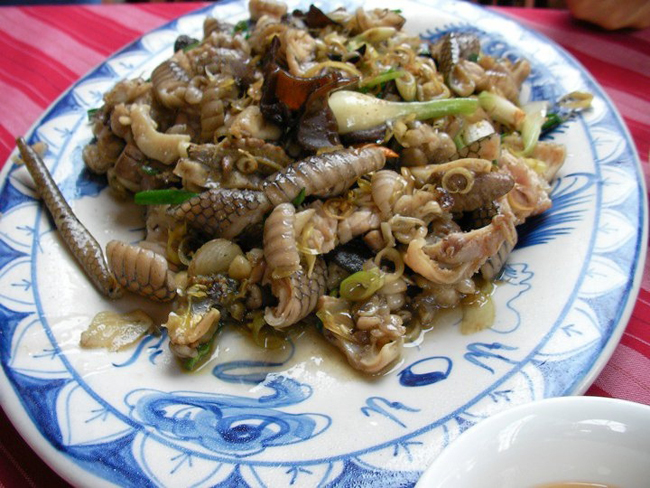I’m all about trying new things and experiencing the local
culture however eating snake was something I’d never thought about before. During
a homestay in Sapa my wonderful host prepared a banquet for dinner of amazing
traditional Vietnamese food. It wasn’t until the snake stir fry that I
hesitated. It is a very unique dish with a protein that western culture do not
use. Being aware of Vietnamese custom, I served my self a small amount to
ensure I could leave an empty plate as to not offend my host. Admittedly it was
quite nice and the Vietnamese flavours broke through my hesitancy as I actually
enjoyed the dish. And to top it off, why not a shot of snake blood vodka.
 |
| https://vietfuntravel.com/blog/top-weird-vietnamese-dishes.html |
Different cultures often have their own food culture as they rely on the
produce that can be sourced easily. Although Australia does have an abundance
of snakes, the fact that my heritage is western it means that we don’t utilize
it as a food source. It gave me an appreciation of the way the Vietnamese use
their resources and don’t waste anything. The whole snake, including the heart, can be and is used. I
know my first reaction was to refuse the dish however I know that this would be
offensive, especially in Vietnam where they take great pride in their work.
 |
| https://www.vice.com/en_uk/article/yv4yzm/drinking-snake-blood-in-vietnam
I think it is important to embrace the culture of the
country you are travelling to and if you are a bit scared about certain things
it can help to do a bit of research on your destination before you arrive. By
doing this you reduce the chances of culture shock and ensure that you travel
respectfully. Furthermore, it is important to understand and practise the
proper customs when travelling to different cultures.
|









